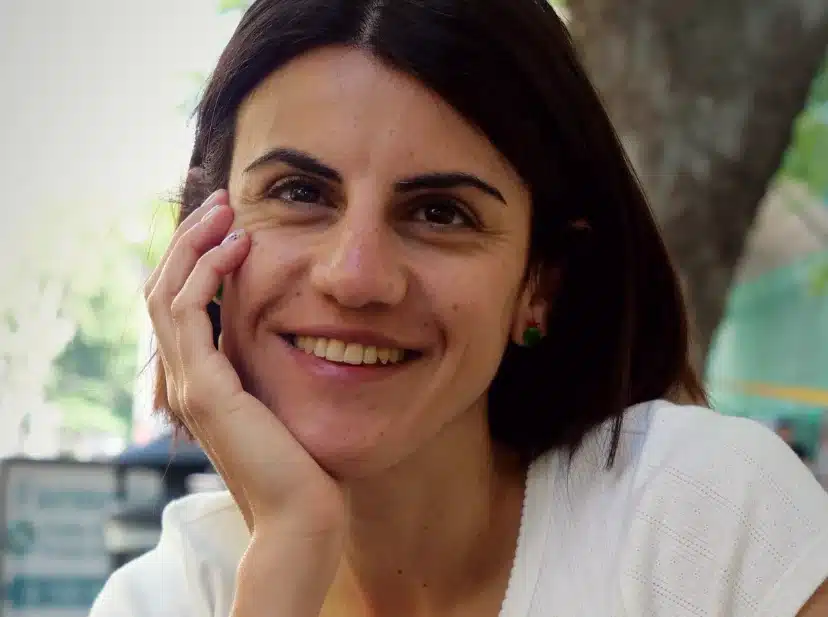What’s a double pronoun in Italian?
In Italian, a double pronoun refers to the use of both a direct and an indirect object pronoun together in the same sentence, typically placed before the verb. This often results in combinations like me lo, te lo, ce lo, ve lo, and so on. These expressions are used when both the direct and indirect objects in a sentence are replaced by pronouns.
For example:
- Mi dai il libro? (Will you give me the book?)
- → Me lo dai? (Will you give it to me?)
If you’re not yet familiar with how direct and indirect pronouns work individually, it’s a good idea to review those first before diving into double pronouns.
Double Pronouns In Practice
| Italian Sentence | Direct Object | Indirect Object | English | Double Pronoun Example | Pronoun Translation in English |
|---|---|---|---|---|---|
| Hai detto a Luca quella cosa? | quella cosa (that thing) | a Luca (to Luca) | Have you told Luca that thing? | Gliel’ hai detta? | Have you told it to him? |
| Hai dato la posta a Gianni? | la posta (the mail) | a Gianni (to Gianni) | Have you given Gianni the mail? | Gliel’hai data? | Have you given it to him? |
As you can see, the sentences above in yellow are shorter and more natural than the first ones in green. In the yellow sentences, I’ve replaced the direct objects and the indirect objects with their respective pronouns. This is possible in Italian whenever you know what you’re talking about or when you don’t want to repeat something that was previously stated.
Double Object Pronouns: The Order
As you can see from the chart below, the indirect object pronoun comes before the direct object pronoun. Additionally, mi, ti, gli, ci, and vi change to me, te, glie, ce, and ve when used in this construction.

Example sentences using the double object pronouns
| Sentence without using Double Pronoun | Double Pronoun Sentence | Direct Object | Indirect Object | English Equivalent | Double Pronoun English Equivalent |
|---|---|---|---|---|---|
| Ti porto la bicicletta stasera | Te la porto stasera | la bicicletta (the bike) | Ti (to you) | I will bring you the bike tonight | I’ll bring it to you tonight |
| Mi hai mandato la mail? | Me l’hai mandata? | la mail (the email) | Mi (to me) | Have you sent me the email? | Have you sent it to me? |
| Gli hai comprato l’acqua? | Gliel’hai comprata? | l’acqua (the water) | Gli (to him) | Have you bought him water? | Have you bought it for him? |
| Mi dai il tuo numero di telefono? | Me lo dai? | il tuo numero di telefono (your number) | Mi (to me) | Can you give me your number? | Can you give it to me? |
| Ci presti la tua macchina? | Ce la presti? | la tua macchina (your car) | Ci (to us) | Can you lend us your car? | Can you lend it to us? |
How to Use Double Object Pronouns in Italian
- Double object pronouns are combinations of direct and indirect object pronouns that allow you to express yourself more concisely when speaking Italian.
- The indirect object pronouns mi, ti, gli, ci, and vi change to me, te, glie, ce, and ve when combined with direct object pronouns, as shown in the chart above.
- Glielo and gliela become gliel’ when they precede a word starting with a vowel or an h (gliel’ho detto – I told it to him).
- In negative sentences, non comes directly before the pronouns (non te lo dico – I am not telling you it).
- Double object pronouns are generally written as two separate words, except for glielo, gliela, glieli, gliele, and all pronoun combinations when attached to an infinitive (e.g., in the imperative form).
- When pronomi combinati are used with the passato prossimo, the past participle must agree in gender and number with the direct object pronoun included in the construction (te l’ho scritta, glieli ho mandati).
How to Use Double Object Pronouns with the Passato Prossimo
In the Passato Prossimo, the past participle must agree in gender and number with the direct object pronoun,
So, it’s important to identify the gender and number of the direct object pronoun and have the past participle of Passato Prossimo agree with it.
So, it’s important to identify the gender and number of the direct object and make sure the past participle agrees accordingly.
Examples :
- Te l’ho mandata
“Yes, I sent it to you.”
→ la lettera (feminine singular) → “mandata” agrees with “la” - Gliel’ho dati
“Yes, I gave them to him.”
→ i documenti (masculine plural) → “dati” agrees with “li” - Le ho incontrate
“Yes, I met them.”
→ le tue amiche (feminine plural) → “incontrate” agrees with “le”
Glielo, gliela, glieli, gliele = combinations of gli (to him/her) + a direct object pronoun (lo/la/li/le).
These are treated as one unit, and agreement is based on the direct object part (not the indirect one).
The Pronouns me ne, te ne, gliene, ce ne, ve ne
Double object pronouns can also incorporate the particle ne. If you’re familiar with intermediate Italian grammar, you know that ne means some of it or some of them, and is often used to answer questions like Quanti? (How many?).
Examples:
- Quanti pacchi gli hai dato?
How many packages did you give him?
→ Gliene ho dati tre.
I gave him three (of them). - Quanti biglietti mi dai?
How many tickets are you giving to me?
→ Te ne ho do due.
I’ll give you two (of them). - Quanti pacchi ci mandate?
How many packages are you sending us?
→ Ve ne mandiamo cinque.
We’ll send you five (of them).
How to use double object pronouns in the imperative
The double object pronouns are used, especially when giving a command in a concise way.
| Dammelo! | Give me (it) |
| Dimmelo! | Tell me (it) |
| Mandaglielo! | Send him (it) |
| Non dirglielo! | Don’t tell him (it) |
All the mentioned forms appear in the imperative, which is used to give a command in Italian. As you may notice, the imperative has the pronouns attached at the end of the verb. This is a particular feature of the imperative in Italian.
Dive deeper:
Let’s Practice!







